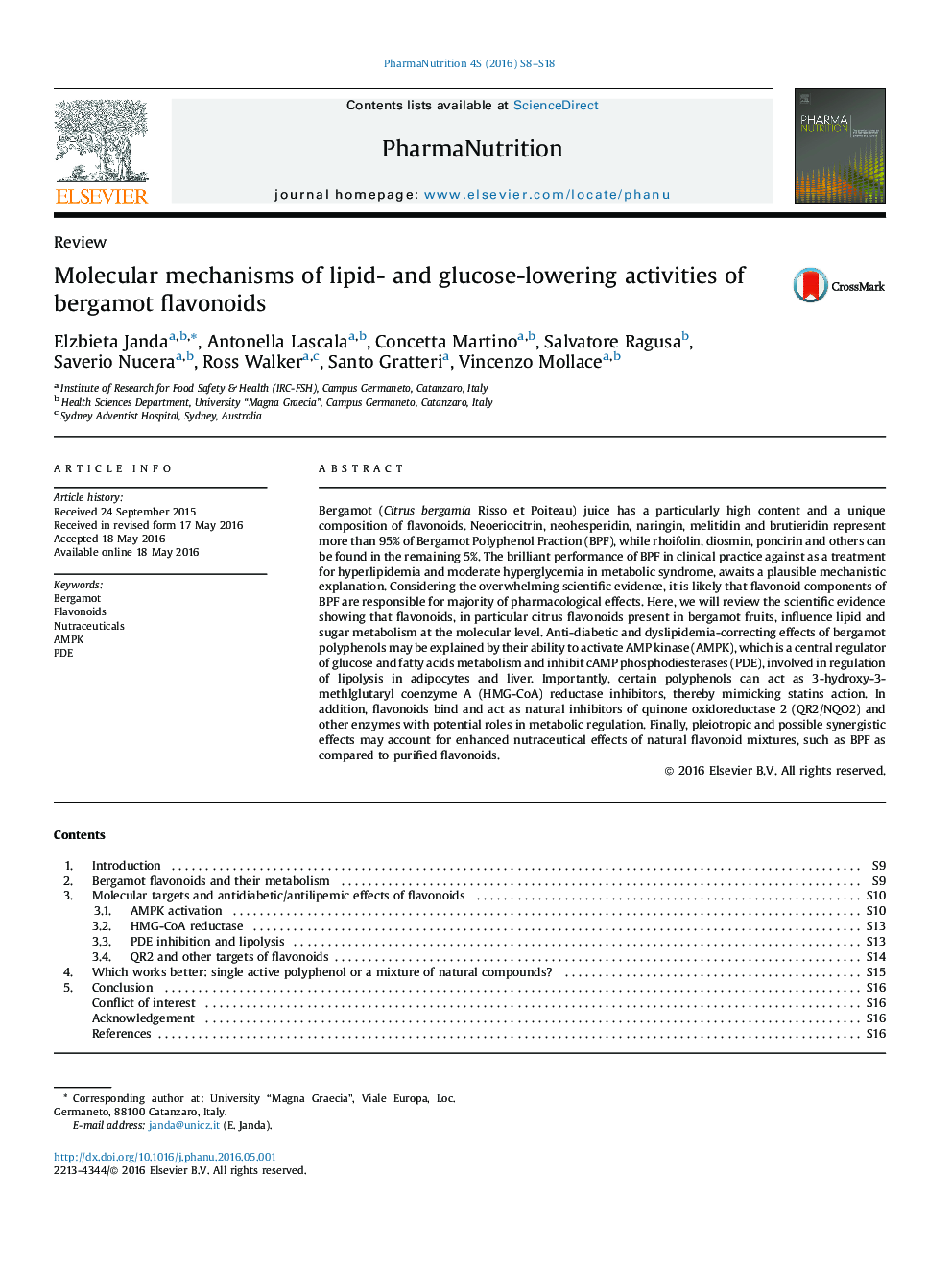| کد مقاله | کد نشریه | سال انتشار | مقاله انگلیسی | نسخه تمام متن |
|---|---|---|---|---|
| 5557872 | 1403188 | 2016 | 11 صفحه PDF | دانلود رایگان |
- Bergamot (Citrus bergamia) juice has a particularly high content and a unique composition of flavonoids.
- Flavonoids, in particular citrus flavonoids present in bergamot fruits, influence lipid and sugar metabolism at the molecular level.
- Finally, pleiotropic and possible synergistic effects may account for enhanced nutraceutical effects of natural flavonoid mixtures, such as BPF as compared to purified flavonoids.
Bergamot (Citrus bergamia Risso et Poiteau) juice has a particularly high content and a unique composition of flavonoids. Neoeriocitrin, neohesperidin, naringin, melitidin and brutieridin represent more than 95% of Bergamot Polyphenol Fraction (BPF), while rhoifolin, diosmin, poncirin and others can be found in the remaining 5%. The brilliant performance of BPF in clinical practice against as a treatment for hyperlipidemia and moderate hyperglycemia in metabolic syndrome, awaits a plausible mechanistic explanation. Considering the overwhelming scientific evidence, it is likely that flavonoid components of BPF are responsible for majority of pharmacological effects. Here, we will review the scientific evidence showing that flavonoids, in particular citrus flavonoids present in bergamot fruits, influence lipid and sugar metabolism at the molecular level. Anti-diabetic and dyslipidemia-correcting effects of bergamot polyphenols may be explained by their ability to activate AMP kinase (AMPK), which is a central regulator of glucose and fatty acids metabolism and inhibit cAMP phosphodiesterases (PDE), involved in regulation of lipolysis in adipocytes and liver. Importantly, certain polyphenols can act as 3-hydroxy-3-methlglutaryl coenzyme A (HMG-CoA) reductase inhibitors, thereby mimicking statins action. In addition, flavonoids bind and act as natural inhibitors of quinone oxidoreductase 2 (QR2/NQO2) and other enzymes with potential roles in metabolic regulation. Finally, pleiotropic and possible synergistic effects may account for enhanced nutraceutical effects of natural flavonoid mixtures, such as BPF as compared to purified flavonoids.
Journal: PharmaNutrition - Volume 4, Supplement, October 2016, Pages S8-S18
